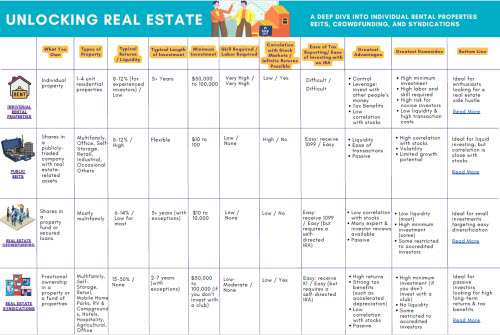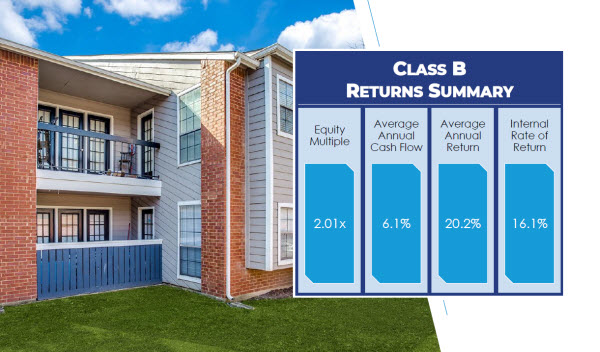
The year I was born (1981), US Treasury bonds paid over 15% interest. Times sure have changed.
Today, you can expect a paltry 2% interest rate (or worse) from Treasury bonds. Which raises questions and suspicions about the traditional investing advice to roll your stock investments over to bonds as you near retirement.
Because in today’s economy, inflation runs higher than Treasury bond interest. Investors actually lose money on their bonds!
That in turn raises another question: What else could I invest in besides bonds for stable retirement income? Consider real estate investments for retirement instead.
What Is the Purpose of Bonds in Your Portfolio?
Bonds have historically served as a counterweight to stocks, as investors approach retirement.
For all their advantages, stocks come with one enormous disadvantage: volatility. When you first retire, you face something called sequence risk: the risk of a stock market crash early in your retirement, before your stock portfolio has compounded enough to withstand a deep drop.
Here’s how bonds protect you from sequence risk, and the role they play in your retirement portfolio.
1. Low Risk
Bonds are interest-only debts. When you buy a bond, the issuer (the borrower) agrees to pay you interest at a set rate for a certain period of time. At the end of that period, the bond matures and you get your principal investment back.
Bonds come with two risks. First, and most relevantly to retirees, the bond issuer could default. That rarely happens, at least outside of the junk bond market. The other risk is that interest rates rise, so the value of your existing bonds goes down on the secondary market. But this risk doesn’t really apply to retirees simply looking for ongoing interest income rather than looking to trade bonds.
The low risk of bond default counterbalances the real risk of stock market corrections and crashes. Retirees can lean on their bond income if the stock market crashes, and (hopefully) avoid selling while stock prices are low.
2. Low Correlation with Stocks
Bonds provide diversification for investors. Bond returns have a low correlation with stock returns: they rarely crash at the same time as stock markets. In fact, bond prices normally rise when stocks crash, as investors flee stocks for the safety of bonds.
Once again, this protects retirees from the risk of a stock market crash.
3. Stable Income
Retirees need passive income to live on, in the absence of a paycheck. Interest payments from bonds can provide that steady income.
The same can’t be said for stocks. Not all stocks pay dividends, and even those that do can change their dividend payment at any time. They could lower or eliminate their dividend entirely, leaving retirees without income.
The retiree could sell their stocks to generate income of course, but that reduces their net worth. Personally, I don’t like the idea of selling off my nest egg, following safe withdrawal rates such as the 4% Rule. I like ongoing income, so my net worth continues to grow until the day I die, when my children can inherit my assets.
Can Real Estate Fill the Role of Bonds in Your Portfolio?
The short answer: yes, if you know what you’re doing. Which, of course, not everyone does.
Real estate investments can earn you ongoing income, with low risk and low correlation to the stock market. So they can serve the same purpose as bonds in your retirement portfolio, at a higher return. In fact, one study reviewing all asset classes for the last 145 years found that rental properties offered higher returns than stocks, with far lower risk.
Still, some types of real estate investments require work on your part. You could invest in publicly-traded REITs, bought and sold on stock exchanges and just as passive as stocks, but they tend to share a high correlation with stock markets. That gives them little diversification value.
But there are many types of real estate investments, each with their own pros and cons. Real estate will never be completely risk-free like Treasury bonds, but it can offer strong returns at low risk, especially if you diversify.
Ways to Invest in Real Estate as a Bond Alternative
The permanent environment of low interest rates in the 21st century have made bonds unappealing and real estate far more appealing. Investors can use leverage to buy real estate with other people’s money, at low interest.
Or not — many of the real estate investing options below don’t involve leverage at all.
Consider the following ways to invest in real estate as options to replace bonds in your investment portfolio.
1. Crowdfunded Private REITs
Publicly-traded REITs come with several downsides, beyond high correlation with stock markets. They’re volatile, with prices bouncing up and down similarly to stocks. But they’re also required by the SEC to distribute at least 90% of their profits each to shareholders, in the form of dividends. That gives them high dividend yields, but it also makes it hard for REITs to invest money in new properties to grow their share price.
Private, crowdfunded REITs such as Fundrise, Streitwise, and Diversyfund don’t have the same restriction. They can grow the value of their fund share prices by reinvesting profits into new properties.
Even so, many do still offer high dividend yields that rival or even beat public REITs. Fundrise pays dividend yields in the 4-7% range, while Streitwise pays dividends in the 8-9% range. I myself have money invested in both, and have been happy with the returns thus far.
Crowdfunded REITs represent one of the easiest and most passive ways to invest in real estate. No mailings or labor to find good deals on properties, no tenant screening or rent collection hassles, just buy shares and sit back.
2. Crowdfunded Investment Property Loans
Hard money lenders issue short-term loans to investors who fix and flip properties, or refinance them after renovating them (the BRRRR method). But where do hard money lenders get their funds to lend?
From you, in some cases. For example, GroundFloor lends short-term investment property loans for buying and renovating, and they raise the money from retail investors like you and me. I have money invested in GroundFloor myself.
You get to pick and choose which loans you want to fund, and you can lend as little as $10 per loan. Which means anyone with $10 in their pocket can invest in real estate, at least indirectly through property-secured loans.
If the borrower defaults, the lender forecloses, and you get your money back that way. Since hard money lenders fund at a relatively low LTV, that provides strong protection against default. Read: relatively low risk.
3. Rental Properties
You can also buy rental properties, of course.
Direct real estate investing comes with plenty of advantages. You can leverage other people’s money by using an investment property loan to fund 75-80% of the cost. Investors get spectacular tax benefits, from rental property tax deductions to property depreciation. And rental income in retirement doesn’t expire or diminish — quite the opposite. Rental cash flow rises over time, as rents rise and provide a hedge against inflation.
Is rental income good for retirement? Absolutely, but it does come with a few caveats. As noted above, buying and managing rental properties takes work. Even if you hire a property manager, you still have to manage the manager.
Rental income is predictable as a long-term average, so you can forecast returns with a rental income calculator. But net rental cash flow each month varies wildly, as you experience vacancies, turnover, or repairs. That means retirees need to budget accordingly with an emergency fund, and not depend on a steady paycheck from every property, every month.
4. House Hacking
Want free housing? Explore options for house hacking, or finding ways for other people to cover your housing expenses.
The traditional model involved multifamily house hacking: typically buying a duplex or triplex, moving into one unit, and renting out the neighboring unit(s). The rents from your neighbors cover your mortgage payment and ideally your maintenance costs as well.
But that’s not the only way to house hack. You can also bring in housemates, or rent rooms or units on Airbnb, or rent out storage space on Neighbor.com. Deni found a unique way to house hack by hosting a foreign exchange student.
By eliminating — or at least greatly reducing — your housing payment, you don’t require nearly as much passive income from your investments to live on in retirement.
(article continues below)
5. Private Notes
A “note” is the legal document that you sign when you borrow money. For example, when you took out your last mortgage, the most important document you signed was the promissory note.
You can lend money privately to other real estate investors, having them sign a private note. You set the terms of the loan, including the interest rate, any fees, loan term, and any other factors. For example, I lent money via a private note to a married couple that invests in real estate in Northeast Ohio, and they pay me 10% interest-only payments each quarter.
Beware, however, that lending money to other investors largely comes down to trust. Unless you file a lien against their property, you have little recourse if they default on you. Only lend money to experienced investors you know well and trust implicitly to pay you back.
Get it right, and you can earn high returns completely passively.
6. Land Notes
There’s a lot to love about land investing.
To begin with, land offers low risk and high returns. It also doesn’t necessarily require much cash to invest — I’ve bought parcels of land for under $1,000. Best of all, you don’t have to hassle with contractors or tenants, which means low stress and far fewer complications. No repairs or renovations, no chasing tenants for rent collection, no property damage by uncaring renters.
For all that, land investing requires you to approach it like a business. You can eventually automate that business to run in the background with only an hour or so required each week from you, but it takes time and labor to get to that point. Many retirees (and employees for that matter) don’t want to launch a side hustle.
If you want to learn how to earn high returns with few headaches and low risk, check out the REtipster land investing course.
7. Real Estate Syndications
Syndications offer another way to invest in real estate for high potential returns. But unlike land investing or rental properties, syndications are largely passive investments.
They work like this: an experienced real estate investor goes out and finds a (hopefully) great deal that costs more than they can afford to buy on their own. So they bring in outside investors to partner with them on the deal, on exchange for a deal-finder fee or bonus.
The outside investors — you and me — become partial owners of the property and share in its cash flow and profits upon sale. But we surrender most management decisions to the syndicator, the person who found and continues to oversee the deal.
We get to invest fractionally in a large real estate project, such as an apartment building, that we would never be able to buy individually. And an experienced real estate investor does all the work for us.
Of course, no investment is perfect. To begin with, most syndication deals only allow accredited investors to participate. The SEC makes the regulation too onerous to allow retail investors to partner on these deals. Along similar lines, syndications typically require a high minimum investment, often in the $50,000-$100,000 range.
And like any managed investment, you place your trust in the manager — in this case, the syndicator. You need to do your due diligence on both the property and the syndicator if you want peace of mind in your investments.
Check out Sam Wilson of Bricken Investment Group for an example of an experienced syndicator.
Final Thoughts
Bonds pay too little interest in the modern economy to interest me. As an experienced real estate investor, I don’t need to settle for bonds’ low returns in order to achieve stable, diversified passive income.
It also doesn’t hurt that I’m pursuing financial independence at a young age. One of the hidden benefits of FIRE (Financial Independence, Retire Early) is that I can afford to take more risks in my investments, because I’ll have plenty of options for active income long after reaching financial independence, unlike a 70-year-old retiree. If I ever got into real trouble after retiring at 40 or 45, I could always just go back to work.
Even so, you can mitigate nearly all the risks of real estate investments — if you know what you’re doing. Learn how to invest in real estate, and you’ll never have to settle for 2% Treasury bonds again.♦
What are your plans for real estate investments in retirement? Do you plan to replace bonds with rental income in retirement? What are your concerns?
More Real Estate Investing Reads:
About the Author

G. Brian Davis is a landlord, real estate investor, and co-founder of SparkRental. His mission: to help 5,000 people reach financial independence by replacing their 9-5 jobs with rental income. If you want to be one of them, join Brian, Deni, and guest Scott Hoefler for a free masterclass on how Scott ditched his day job in under five years.



























Very good information. Thank you for sharing with people who are looking to retire.
Glad to hear it was useful for you Fin!
I really liked the ideas of retirement portfolio!
Thanks Hank, glad they were helpful!
I think bonds have their own benefits.
I hear you Aby! Mine is definitely a minority opinion on the topic 🙂
Anyone who wishes to replace bonds with real estate, please be careful and learn real estate first. If you don’t you would lose. I suggest follow the articles posted by Brian, it would help you a lot.
Great point Sasha – it definitely takes more skill to invest in real estate than bonds!
How do you feel the risk compares, between real estate and bonds?
It depends on your experience level as a real estate investor. Experienced real estate investors can predictably earn 10%+ returns with minimal risk. Novice investors often lose money.
Steady Income
Bonds pay set interest for a predetermined period of time. In other words, they pay predictable fixed income that retirees can rely on to pay their bills.
There’s nothing predictable about stocks however. Even those that pay dividends can change those dividends at any time. So, bonds serve as a steady source of retirees’ passive income.
Very true Christy! It’s one reason why I like to balance my stock portfolio with a real estate portfolio.
This is a good read. Thanks for the share!
Thanks Gregory, much appreciated!
I totally agree with you, Brian. Bonds are a safe investment but investing in real estate is waaaaaaaay better for both returns and inflation protection!
Keep us posted on your investing plans Dennis!